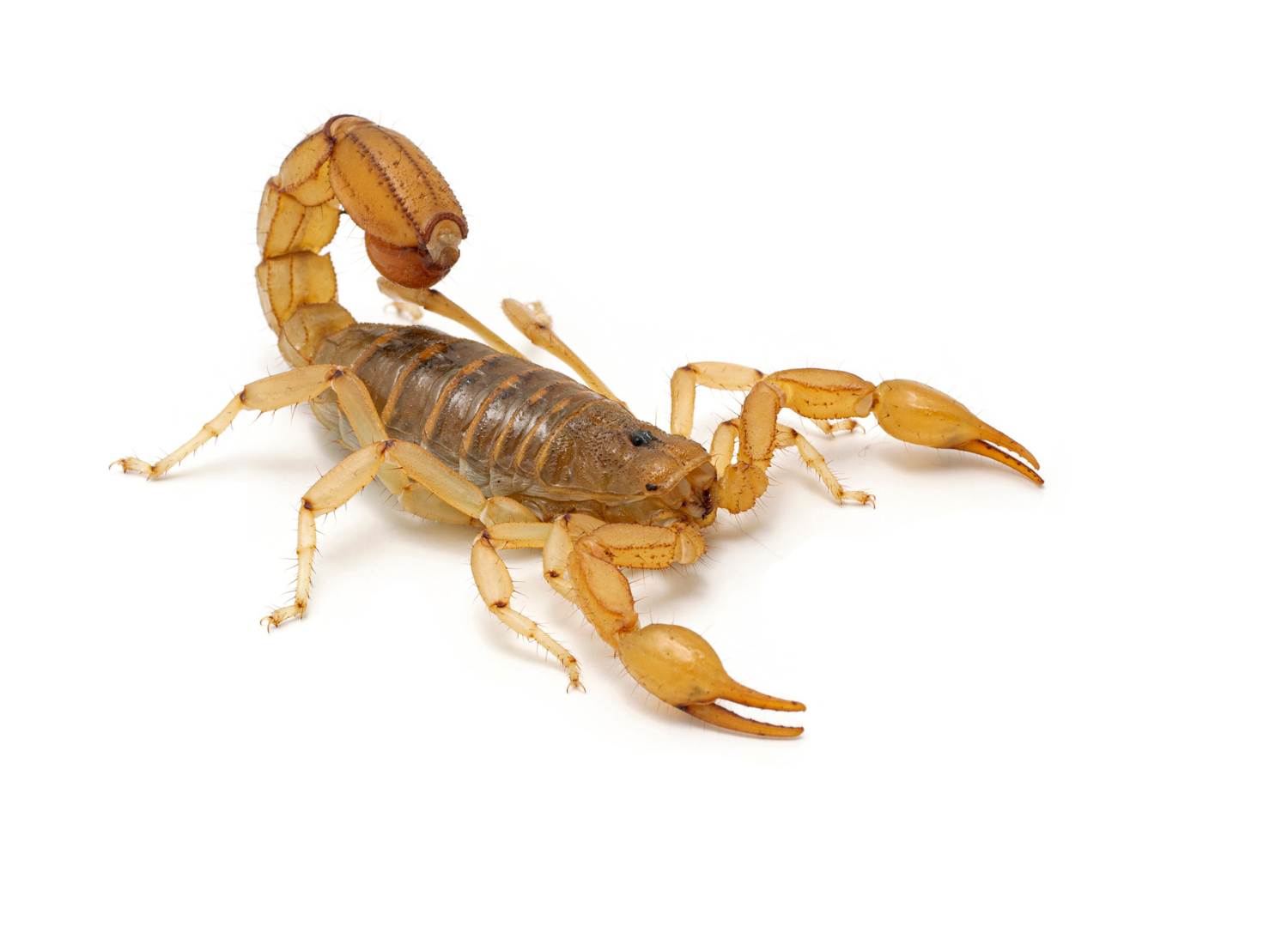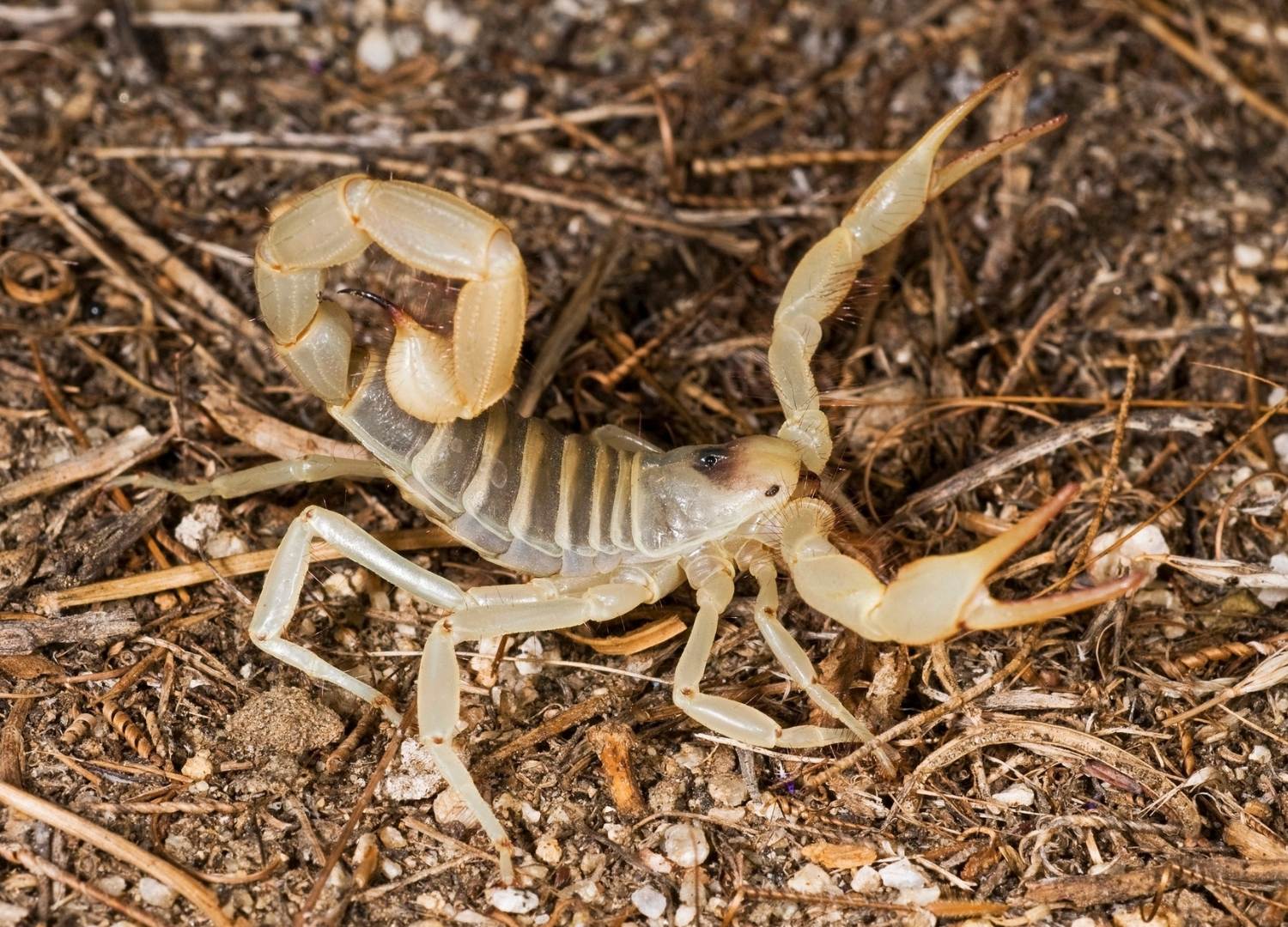Arizona is home to a diverse array of wildlife, famously including scorpions. These arachnids have adapted to the harsh desert environment and play a crucial role in the ecosystem. While they play a significant role in the Arizona ecosystem, they are not typically a welcome member of the ecosystem of your home and are intrusive pests that sneak their way into your home and attempt to nestle themselves in as an unwanted member of your family. By focusing on scorpion species identification and behavior and by understanding these creatures better, you can better protect your home and appreciate their place in the desert ecosystem.
Arizona's Scorpion Diversity
Arizona is home to over 30 species of scorpions, making it one of the most scorpion-rich areas in the United States. While all scorpions share certain characteristics, they also exhibit distinct features and behaviors that set them apart.
Most Common Arizona Scorpion Species
Arizona Bark Scorpion (Centruroides sculpturatus):

- Identification: These scorpions are small, typically measuring 2-3 inches in length. They have a slender body and pale yellow to light brown coloration. Their pincers are long and thin.
- Habitat: Arizona bark scorpions are commonly found in urban areas, favoring palm trees, wooden structures, and outdoor furniture. They are excellent climbers.
- Behavior: They are nocturnal and are often found hiding in crevices during the day. Their venom is potent, and they can deliver a painful sting, although fatalities are rare.
Striped Tail Scorpion (Vaejovis spinigerus):

- Identification: These scorpions have a dark brown or black body with yellowish stripes on their metasoma (tail). They measure around 2-3 inches in length.
- Habitat: Striped tail scorpions prefer desert habitats, including sandy or rocky areas. They are commonly found under rocks and debris.
- Behavior: They are nocturnal hunters, preying on insects and other small arthropods. Their sting is not usually harmful to humans but can be painful.
Giant Hairy Scorpion (Hadrurus arizonensis):

- Identification: These scorpions are among the largest in North America, reaching lengths of up to 6 inches. They have a dark brown to black body with a thick, hairy appearance.
- Habitat: Giant hairy scorpions prefer desert environments with sandy soils and rocky outcrops. They burrow to escape extreme temperatures.
- Behavior: They are primarily nocturnal, feeding on insects and other arachnids. While their sting can be painful, it is not considered medically significant for humans.
Scorpion Behavior
Understanding the behavior of Arizona scorpions is essential for effective pest control and minimizing encounters. Here are some key aspects of their behavior:
- Nocturnal Activity: Most Arizona scorpions are nocturnal, meaning they are active at night and rest during the day. This behavior helps them avoid extreme daytime temperatures.
- Predatory Nature: Scorpions are carnivorous and primarily feed on insects and other arachnids. They use their pincers to grasp their prey and their venomous stingers to immobilize and digest it.
- Mating and Reproduction: Scorpions engage in complex courtship rituals. After mating, females give birth to live offspring, which they carry on their backs until the young scorpions are ready to fend for themselves.
- Burrowing and Shelter: Many scorpion species in Arizona are burrowers. They create underground shelters to escape the heat and cold. They also seek shelter in cracks, crevices, and under rocks.
- Venom and Stings: Scorpions use venom both for subduing prey and defending themselves. While most scorpion stings are not life-threatening to humans, some species, like the Arizona bark scorpion, have potent venom that can cause severe pain and symptoms.
Preferred Habitats
Understanding where scorpions live can help homeowners take preventative measures to reduce the risk of encounters. Here are some common habitats favored by Arizona scorpions:
- Rocky Outcrops: Many scorpions, including the giant hairy scorpion, prefer rocky terrain. They burrow under rocks and crevices during the day.
- Sandy Deserts: Scorpions like the striped tail scorpion thrive in sandy desert environments. They burrow into the loose soil to create their shelters.
- Urban Areas: The Arizona bark scorpion is known for its adaptability to urban environments. It often hides in and around homes, particularly in places like palm trees, attics, and outdoor furniture.
- Vegetation: Some scorpions may hide in vegetation, especially in desert oases and riparian areas.
Scorpion Control and Safety Tips
Given the potential for scorpion encounters in Arizona, it's crucial to take precautions and consider professional pest control services from Green Mango to secure your home from these pests. Here are some safety tips:
- Seal Entry Points: Seal cracks, gaps, and openings in your home's foundation, walls, and windows to prevent scorpions from entering.
- Reduce Outdoor Clutter: Keep outdoor areas clean and free of debris, as scorpions can hide in piles of wood, rocks, and other clutter.
- Use Yellow Light Bulbs: Install yellow or sodium vapor light bulbs outdoors, as these are less attractive to insects and, in turn, scorpions.
- Shake Shoes and Clothing: Before putting on shoes or clothing that have been left outside, give them a shake to dislodge any hidden scorpions.
- Professional Pest Control: Consider hiring a professional pest control company with expertise in scorpion management if you have a recurring problem.
Conclusion
Arizona's diverse scorpion species are a testament to the unique and challenging desert environment they inhabit. By understanding the different scorpion species, their behaviors, and preferred habitats, you can better protect your home and minimize potential encounters. Remember that while most scorpion stings are painful but not life-threatening, it's essential to exercise caution and consider professional pest control services from Green Mango when necessary. Ultimately, coexisting with these fascinating arachnids is possible with the right knowledge and precautions.


